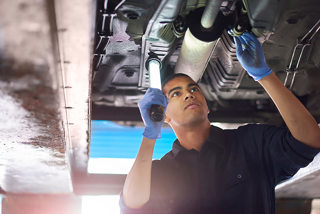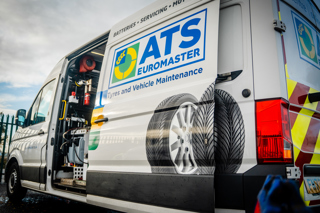With the introduction of a six-month MOT exemption on MOTs, drivers will have to take greater responsibility for their own road safety, says charity, TyreSafe.
TyreSafe says, although vehicle owners have been granted a six-month MOT exemption, the law governing the minimum legal tread depth of 1.6mm has not been suspended.
At present, a tyre being driven below 1.6mm is illegal and if found by the police could result in a fine of up to £2,500 and three-points being added to a driver’s licence – per tyre.
If motorists are to minimise their risk of an incident on the roads, they will need to ensure their tyres’ air pressure, condition and tread depth are fit for the road and legal, the charity says.
Stuart Jackson, chairman at TyreSafe, said: “The need to make vehicles exempt from the MOT is regrettable from a road safety point of view but entirely understandable in the current context of the coronavirus (COVID-19) pandemic.
“However, drivers should be making certain when they drive, their vehicle is safe. With so many uncertainties and unexpected events happening to families and organisations all the time, drivers should not delay in carrying out these checks but instead be confident their car is roadworthy no matter what the reason for their essential journey.”
Over a quarter of MOT failures have historically been due to unsafe tyres, according to TyreSafe.
Tread depth is essential to keep a vehicle in contact with the road in wet conditions. Without this contact, a vehicle will be more difficult to control and take longer to stop.
A tyre’s correct air pressure is determined by the vehicle manufacturer and can be found in the handbook, door shut or fuel filler cap, and on many online pressure look-up tables including at tyresafe.org.
Owners should use an accurate pressure gauge to check their tyre’s inflation level and adjust it according to the manufacturer’s recommendation, paying attention to the need to adjust between heavy and light loads.
A 20p-piece can be used as a guide to how close a tyre’s tread is to the legal limit. Insert the coin across the width of the tyre and around its circumference; if the border to the 20p is visible, the tyre is close to the legal limit and should be checked with an accurate gauge.
Drivers should also check their tyres for any lumps, cracks or objects embedded in it. If any of these are seen, the tyre should be considered unsafe to use until checked by a professional, advises TyreSafe.
The Department for Transport (DfT) announced that from March 30, vehicle owners have been granted a six-month exemption from MOT testing to enable vital services such as deliveries to continue, frontline workers to get to work, and to allow people to access essential food and medicine.
TyreSafe is a UK charity raising awareness of the importance of correct tyre maintenance and the dangers of defective and illegal tyres.
If you want to read more about tyre safety, click here.
For the latest coronavirus advice for fleet operators click here.
For the latest coronavirus-related news click here.






















Login to comment
Comments
No comments have been made yet.